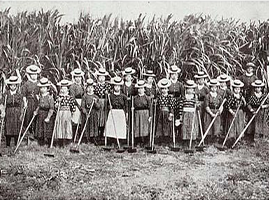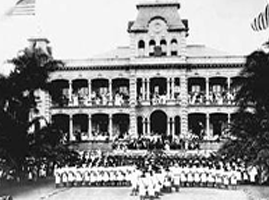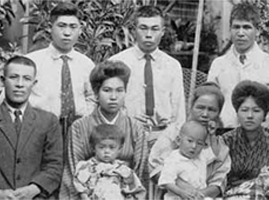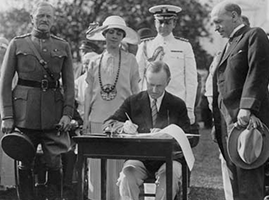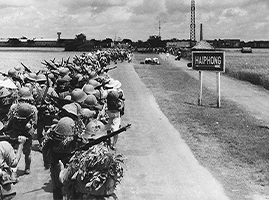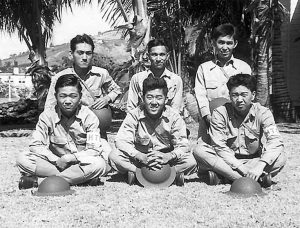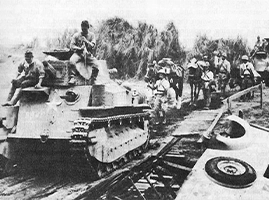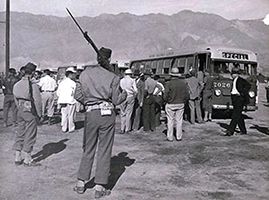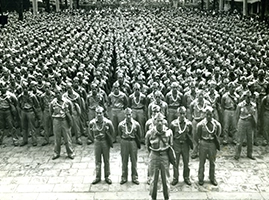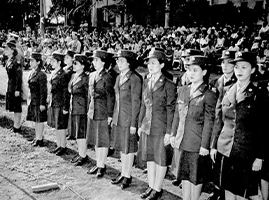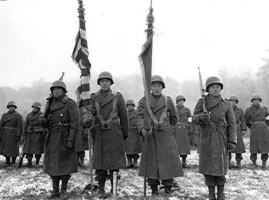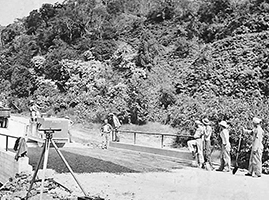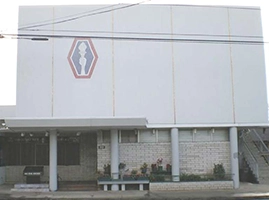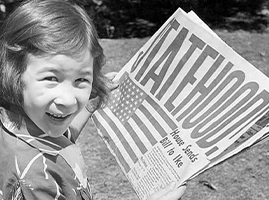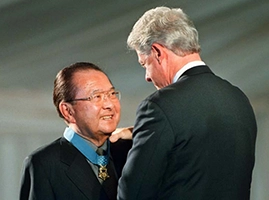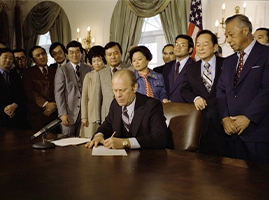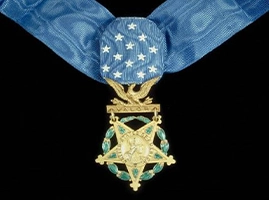American Commodore Matthew Perry led four U.S. Navy ships into Tokyo Bay on July 8, 1853, with a goal of opening Japan to trade and discourse after its 200-year isolationist policy.
“On behalf of Emperor Mutsuhito, Japan is honored to welcome you as the first head of state to visit our kingdom in our two thousand year history. Our emperor’s brother humbly invites you to stay at his cottage as his guest.” — Letter delivered to King David Kalakaua upon his arrival in Japan in 1881
Although Perry is often credited with opening Japan to the west, Portuguese, Spanish, and Dutch traders had traded with Japan in the 16th and 17th centuries, until Japan expelled foreigners in 1639.
The United States regarded Japan as an ideal place to stop for provisions and fuel during trading trips to China. American sailors also needed a safe harbor in case of shipwrecks. Prior to Perry’s arrival, American sailors who shipwrecked on Japan’s shores were met with hostility by the Japanese.
Americans also believed it was the United States’ Manifest Destiny to extend its political, social and economic influences. This sentiment prompted American merchants and missionaries to travel across the Pacific with the intent to influence China and Japan.
Perry sailed into Tokyo Bay with a letter from President Millard Fillmore addressed to the Emperor of Japan, who was more of a figurehead. (The true leader was Tokugawa Shogunate.) Perry’s mission was to foster an agreement for the protection of shipwrecked or stranded Americans and to open one or more ports for supplies and refueling. To show off the superiority of the West, Perry brought such gifts as a working model of a steam locomotive, a telescope, a telegraph, and a variety of wines and liquors. But it was Perry’s show of military force that had the most impact. The Japanese had no way to defend themselves, and had to agree to the demands.
The following spring, Perry returned with an even larger military force and Japan reluctantly signed the Treaty of Kanagawa, which protected stranded US seamen, opened two ports for refueling and allowed the United States to have counsels live in these port cities. It also contained a most-favored-nation clause, allowing all future concessions Japan granted to other foreign nations to be granted to the United States.
The United States and Japan signed their first true commercial treaty, the Harris Treaty, in 1858, which opened five additional ports to US trade and gave religious freedom to US citizens living in the ports.
Japan diplomatic mission to US visits in Hawaii
In March 1860, the first diplomats sent by the Japanese government to the United States were met by bad weather and stopped unexpectedly in Honolulu enroute to Washington, DC.
The Japanese visitors remained as guests of the Hawaiian government, and during their stay, Hawaii Minister of Foreign Affairs Robert Wyllie proposed a treaty between Japan and Hawaii that was similar to the treaty between Japan and the United States.
After returning home, the Japanese ambassadors reported the proposition, but Japan rejected the proposal to establish a treaty with the Hawaiian government.
King Kalakaua visits Emperor of Japan during world tour
In March 1881, Hawaii’s King Kalakaua visited Japan for 19 days, as part of a world tour. Upon arrival, the King and his entourage were greeted with welcoming ceremonies that included the playing of "Hawaiʻi Ponoʻi," the Hawaiian national anthem which Kalakaua had written.
Although the king was travelling incognito, the Japanese government had been alerted by a telegraph from the Imperial General Consul in San Francisco and welcomed Kalakaua as a head of state.
During his visit to Tokyo, King Kalakaua privately discussed with the Meiji Emperor the possibility of forming a league of Asian countries to oppose the domination of European countries. Kalakaua offered to propose the league to leaders of China, Siam, India, and Persia on his world tour, if the Meiji Emperor would agree to head it up; however, this offer was declined.
Yet, Kalakaua and the Meiji Emperor saw the value of building a stronger relationship, and in 1885, an agreement was signed allowing the immigration of Japanese laborers to work in Hawaii’s plantation fields. On February 8, 1885, the first group of government-backed Japanese immigrants arrived in Hawaii, with credit given to the personal friendship between the two heads of state. The agreement was ultimately terminated in 1894. However, private labor contractors continued to bring Japanese workers to Hawaii until 1924, when immigration from Japan was banned by the US government.

King David Kalakaua

Commodore Perry meets Japanese officials

Japanese interpreters at the White House
Matthew Perry and the Opening of Japan

Events (1853 – 1881)
Commodore Matthew Perry and four U.S. Navy ships enter Tokyo Bay with a goal of opening Japan to trade and discourse after its 200-year isolationist policy.
Japan diplomatic mission to US visits Hawaii enroute to Washington DC: two ships — Kanrim Maru with 96 men and one American advisor as the escort ship to USS Powhatan that carried the three diplomats.
King Kalakaua of Hawaii visits the Meiji Emperor in Tokyo and requests more contract laborers; follow-up requests in 1882 and 1883.
PHOTOS COURTESY OF:
Library of Congress
Hawaii State Archives, photography by J.J. Williams
Library of Congress
Hawaii State Archives, photography by J.J. Williams

